After three great days in Amsterdam we finally made it to our river boat, the S.S. Maria Theresa. We arrived at noon instead of the advertised check in time of three o'clock, but that was no problem. Our stateroom was not ready for us, but we were invited to relax in the lounge, enjoy a cocktail, and then partake of the luncheon buffet in the dining room.
There were a few departing guests in the lounge awaiting their transportation, so that gave us an opportunity to pick their brains a bit about the highlights of the cruise.
Here's our river boat, modern, long and sleek. The long sweeping window up top is the lounge, the one down below in the dining room.
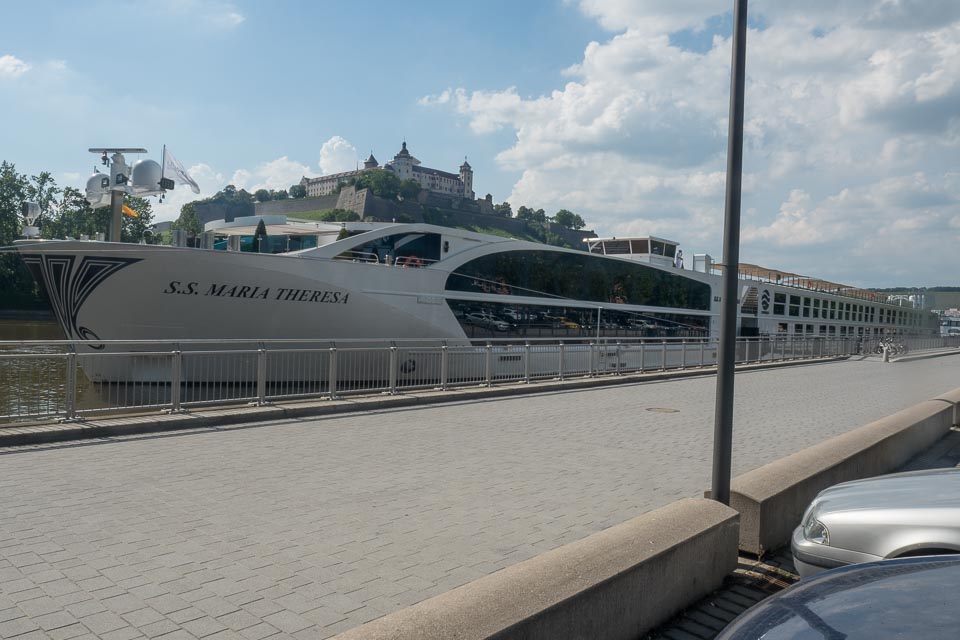
Guest staterooms are on the decks with the large windows. The crew quarters, kitchen, etc., are down where the small windows are. Our stateroom was on the lower of the two guest decks, the fourth window from the rear.
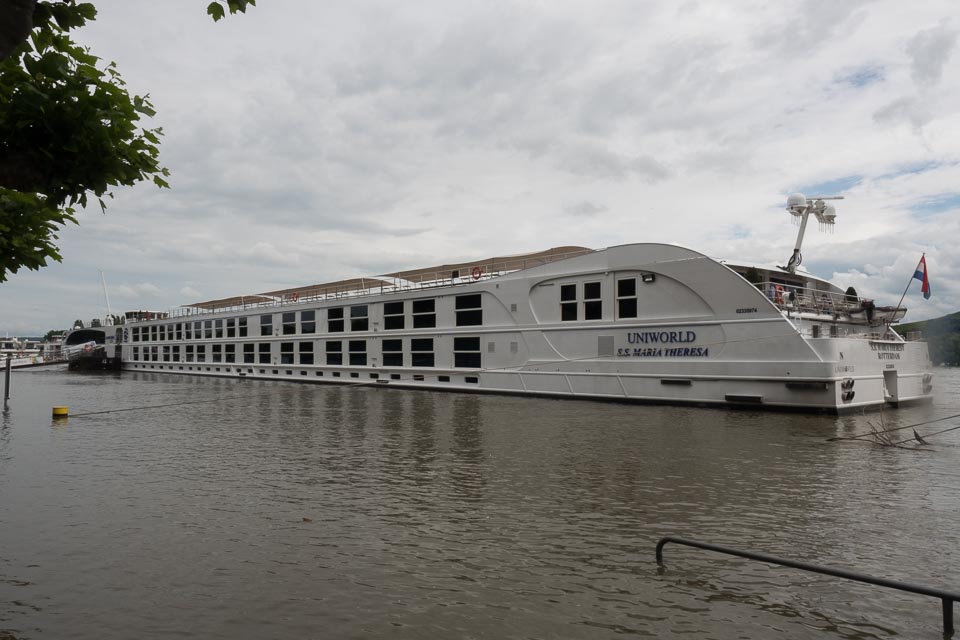
It was typical for river boats to tie up alongside each other. There just aren't enough docking spaces to accommodate them individually. We are tied up outboard of an Ama ship. Usually in order to cross the inboard ship, you had to go up to your ship's top deck, walk across the other ship's top deck and then down and off. A bit awkward, but necessary for security reasons.
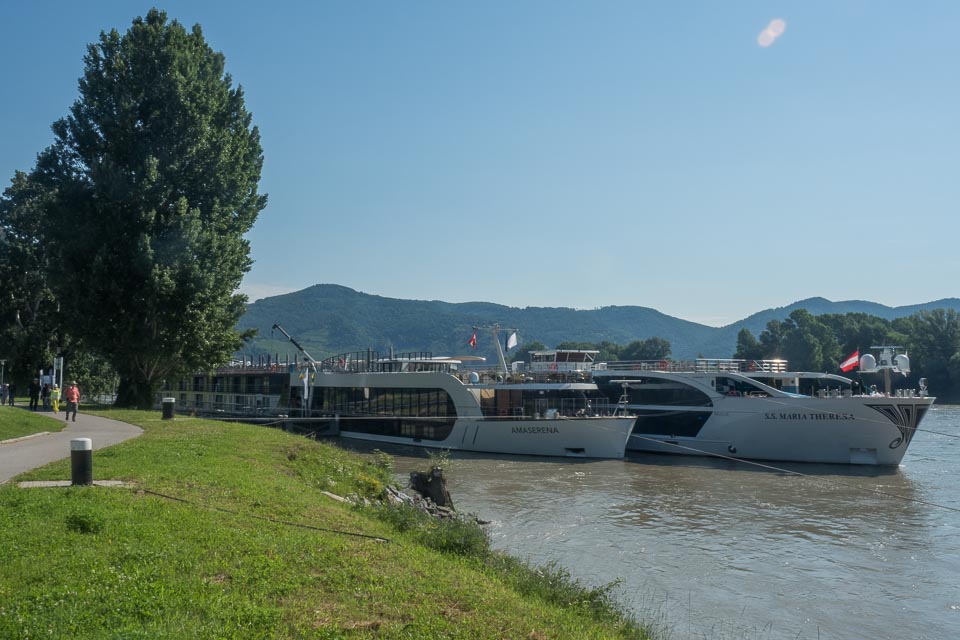
The lounge bar, literally our first stop on the ship as this is where we waited while they finished readying our stateroom.

The grand stairway, looking down from the lounge level. The painting is of Maria Theresa.

The grand stairway leading up from the main level where our stateroom was located as well as the dining room.
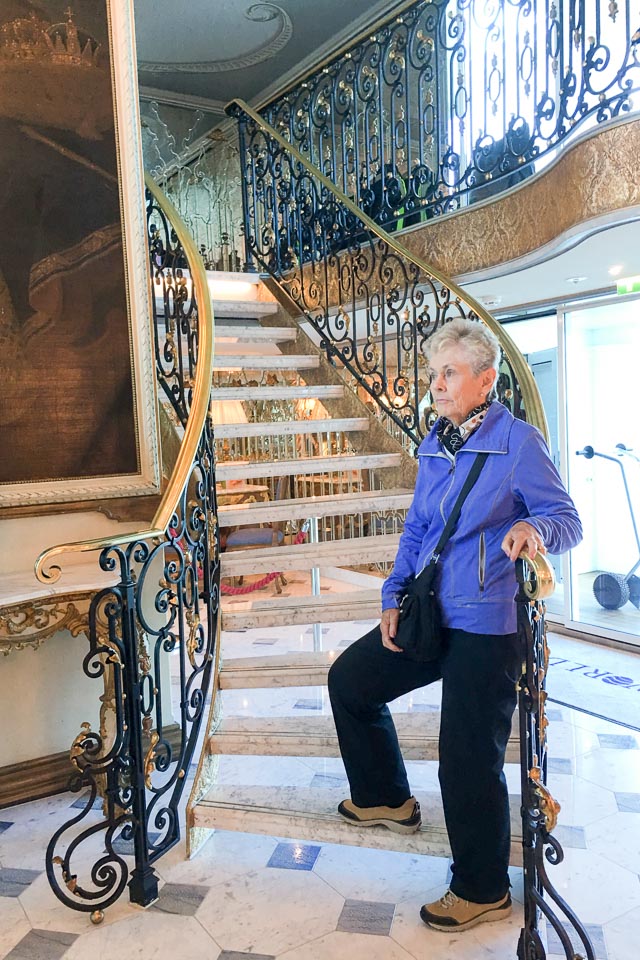
The captain's welcome, his champagne, my martini and nibbles.
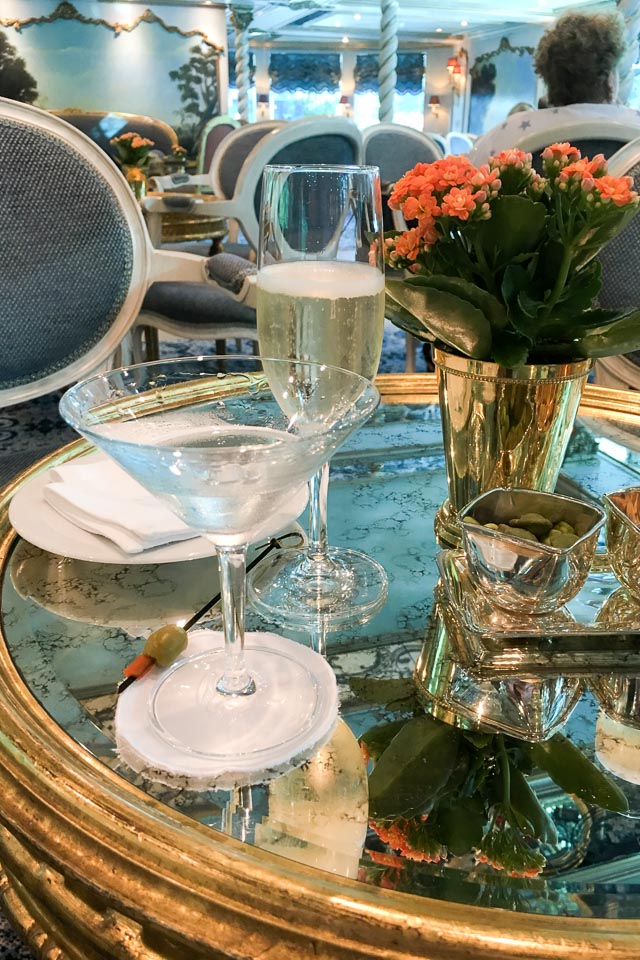
Another time, wine and nibbles after a tiring day.

Just a simple offering for lunch. Needless to say, the meals were lavish. Breakfast and lunch were served buffet style. Dinner was served by the staff. There was a small café down below where you could get something to eat during outside of the regular meal hours. You don't go hungry on this ship.
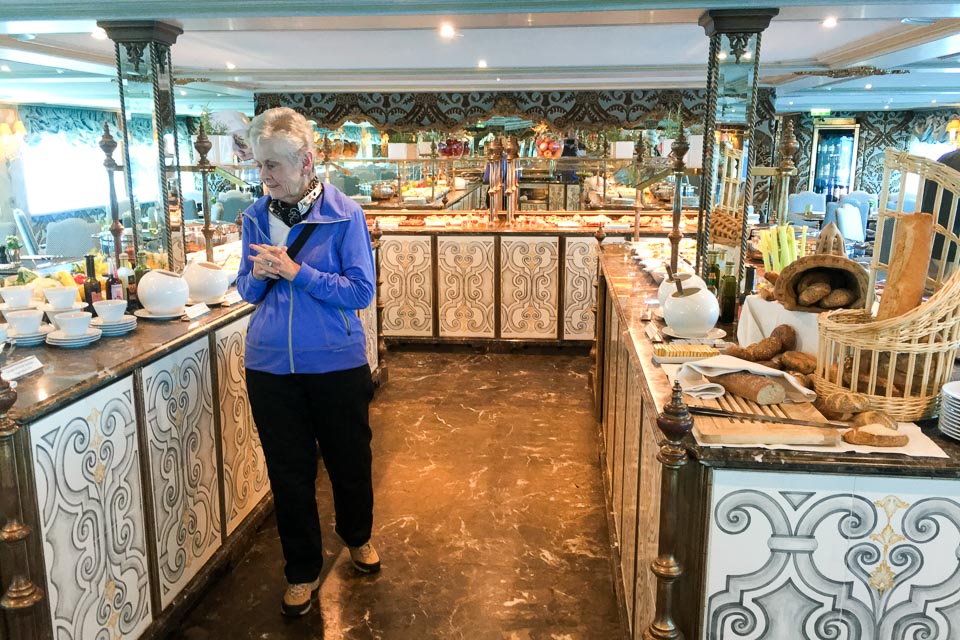
And the exquisite pool back at the Leopard Bar on the boat's stern.
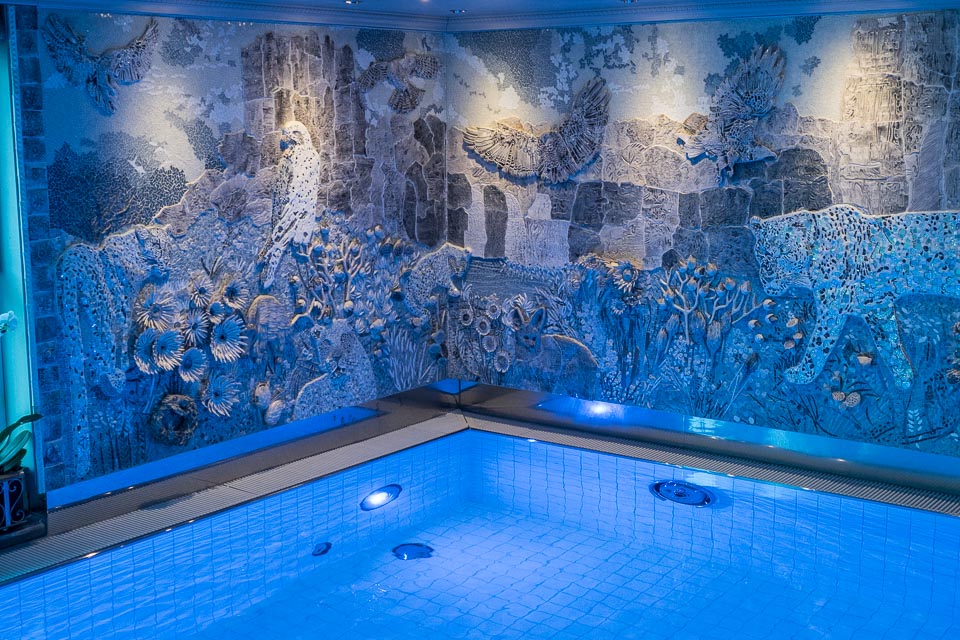
One of the necessary features of river boats is the ability to retract the pilot house when there is inadequate clearance going under certain bridges. That's even more of a problem when there has been lots of rain and the rivers are higher. In fact, a couple of weeks before our cruise some boats could not get under the bridges even with their pilot house retracted.
I assumed that the problem was mostly with the older bridges crossing the river, but that's not necessarily the case. Most low clearances occurred on the Main-Danube Canal, a new canal with new bridges. When they built the canal, the concept of river boats with tourists was nowhere on the horizon. Clearances were designed for the barges that would be operating on the canal and they ride much lower. When the river boats came along, the operators wanted two decks for the passengers which meant the pilot house was high on the third deck, too high to pass under some of the bridges. Solution: make the pilot house retractable.
You are looking aft, from the front of the top deck towards the rear. We had just entered one of the locks and the captain graciously agreed to demonstrate how the pilot house is retracted. This is the normal configuration. The pilot house is in the middle with an auxiliary control station on each side. Those are used in the locks and when mooring. Note that most of the deck hardware has already been collapsed. The railings were up only where we passengers were permitted to go at that particular time.
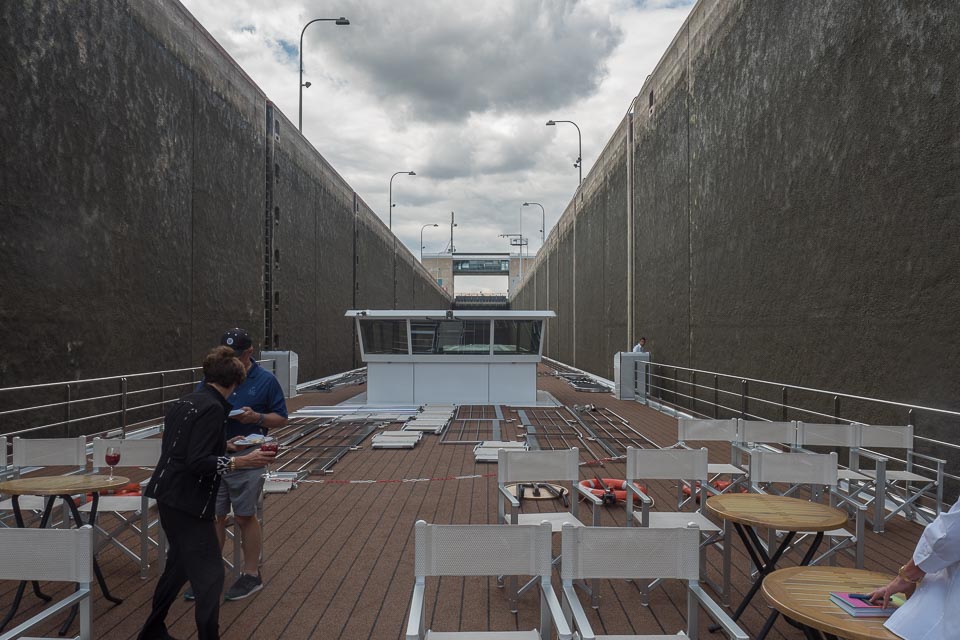
The pilot house is 2/3 retracted. It is being controlled by one of the seamen standing at the port auxiliary control station on the right of the photo.
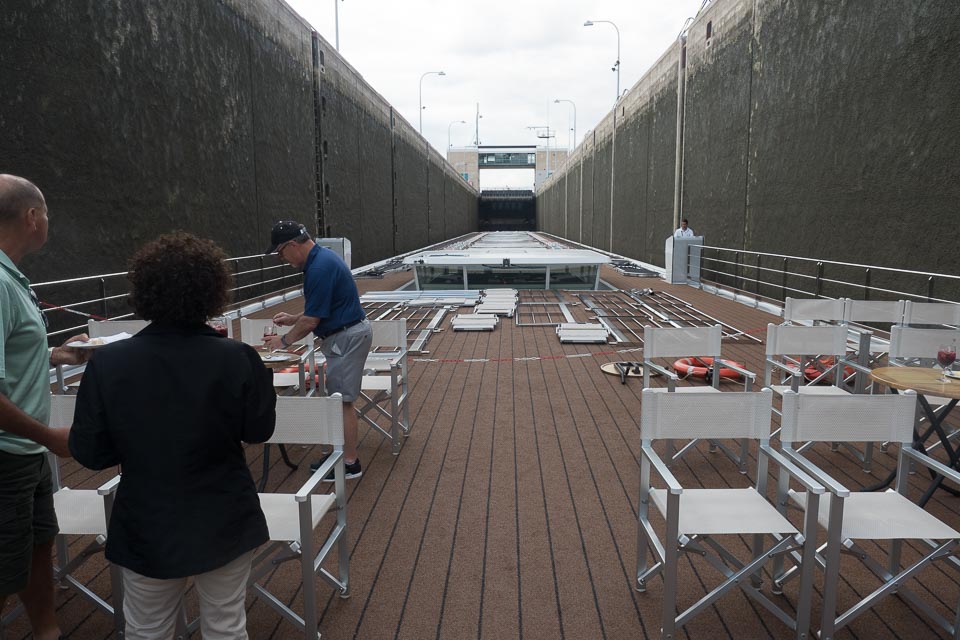
The pilot house is gone, disappeared, flush with the deck.
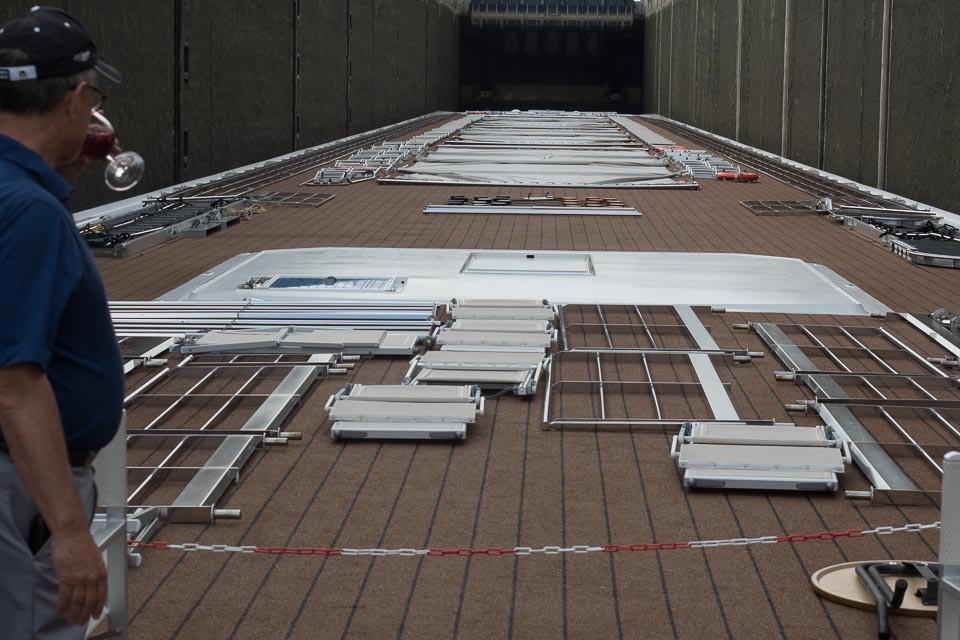
And now the auxiliary control stations have been retracted also. Only the seaman's chest and head are above the deck, looking somewhat like a tank driver. This is the configuration when the boat is passing beneath a low bridge and the captain is controlling it all from one of the auxiliary control stations.
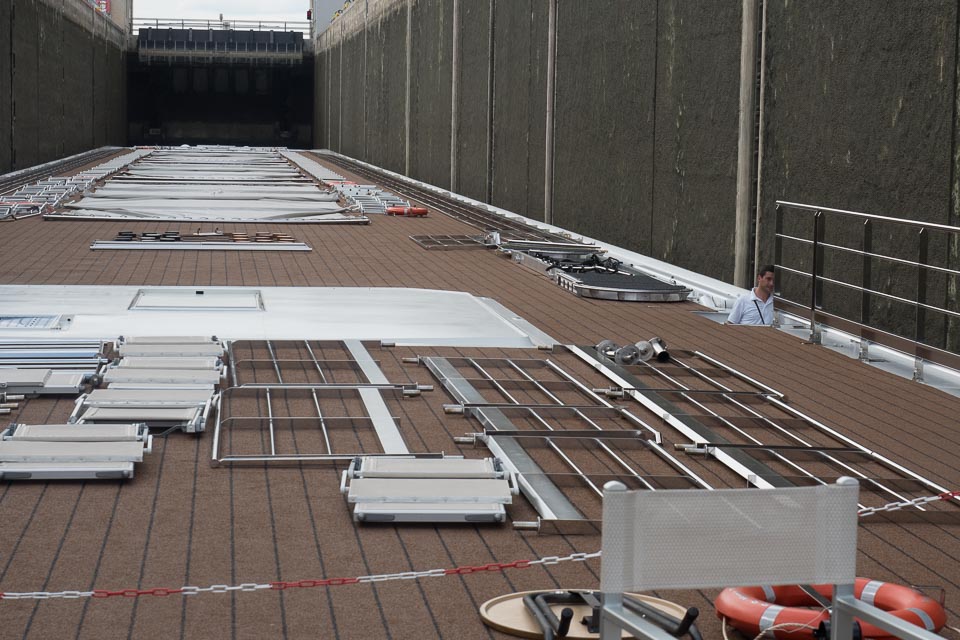
I was astonished when I learned the crew size. There is considerable staff in hotel services, food and beverages and tour services. All totaled, there were 51 crew members on board. But how many actually comprise the boat's crew, operating it and getting it from A to B? Of those 51, only 8! There are two captains. One is in the pilot house when the boat is underway and he is the only one in the pilot house. There are three deck hands handling the lines when we pass through locks and when the ship is being moored. There are three engineers who are ensuring all of the equipment is functioning properly. But they are not standing watch in the engine room; no one is in the engine room when the boat is underway. The captain can monitor it all via repeater gauges and TV screens.